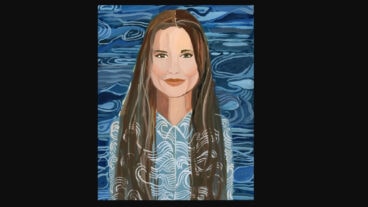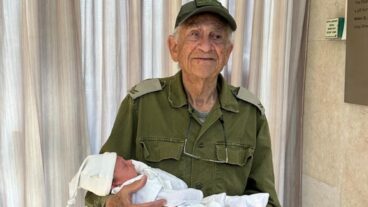Jacob Ziv was one of those boys who endlessly tinkers with circuits and gadgets. Instead of outgrowing that childhood curiosity, he channeled it into a career that changed the course of world communication and earned him a passel of major awards.
The most recent accolade garnered by the 78-year-old Israeli innovator of data compression was the Information and Communication Technologies Award of the BBVA Foundation – with a cash prize of 400,000 euros, or more than half a million dollars.
Thanks to his adolescent inquisitiveness, the future electrical engineer almost didn’t make it to 18, let alone 78. He tells ISRAEL21c that as a young teen he was fascinated with his Russian-born father’s book on Guglielmo Marconi, inventor of the wireless transmitter.
“I didn’t know a word of Russian, but using a dictionary, I translated the story about Marconi word for word and I was naive enough to think I could build my own transmitter,” he says. “When my parents left the house one day, I plugged it in and I got quite a shock.”
Ironically, Ziv won the Marconi International Fellowship Award from the Marconi Society in 1995.
His interest in radio transmission – what he calls “the backbone of communication” – led to his later contributions to computer memory, modems, software distribution, and file compression. Without the ingenuity of Ziv and his students, there would be no MP3s, GIFs, PDFs, or pictures from Mars. Hard drives would lumber along, faxes wouldn?t retransmit, and televisions would definitely not be high-definition.
Drafted to fight at the age of 16
Ziv was just 16 when he was drafted to fight in Israel’s war of independence in 1948. That same year, American computer science legend Claude Shannon established the mathematical discipline called information theory.
Ziv did not yet know of this field that would become his specialty. At first sent to the front lines, he and his peers were pulled back to safer positions after their mothers protested. He landed a job as a radar technician for the fledgling Air Force.
Afterwards, Ziv earned bachelors and masters degrees in electrical engineering at the Technion-Israel Institute of Technology. The Technion is often compared with the Massachusetts Institute of Technology, where Ziv earned a graduate degree in 1962.
Spotting a future star, the Israel Ministry of Defense sponsored Ziv’s MIT studies and made him director of its scientific department’s communications division upon his return.
From 1968 to 1970 he worked at Bell Laboratories in New Jersey, but there was never any question that he’d end up back in his homeland. “In communication theory and technology, Israel is high on the list and offers a lot of advantages,” he says. “You certainly don’t feel there is any scientific isolation here.”
In 1970, he joined the Technion faculty full time and has served in administrative capacities as well. Though officially retired, he is there often these days, lecturing and writing.
Transmitting information without distortion
Ziv estimates that three-quarters of Israel’s high-tech endeavors are rooted in information theory, a theoretical discipline that underpins all modern communication technologies.
“Information theory is not about human communication, but about providing the technical means to convey it,” he explains. “It is about transmitting information without distorting it.”
Ziv continues to apply his formulas in new areas of data detection, classification, and compression. “The accent is on how to do these procedures when you know nothing about the structure of the thing you want to compress or classify,” he says.
As president of the Israel Academy of Sciences and Humanities from 1996-2005, Ziv launched initiatives to enhance Israel?s R&D infrastructure. In 1996, his Telem Forum helped secure a $230 million five-year investment in nanoscience and nanotechnology research.
In the spring, Ziv will go to Spain to accept the BBVA award, organized in partnership with Spain’s National Research Council.
“I have no idea yet how I will use the money,” he says, but he has some inkling of where a portion of it will go. “I have nine grandchildren and I also have a partner – the Israeli income tax authority.”













